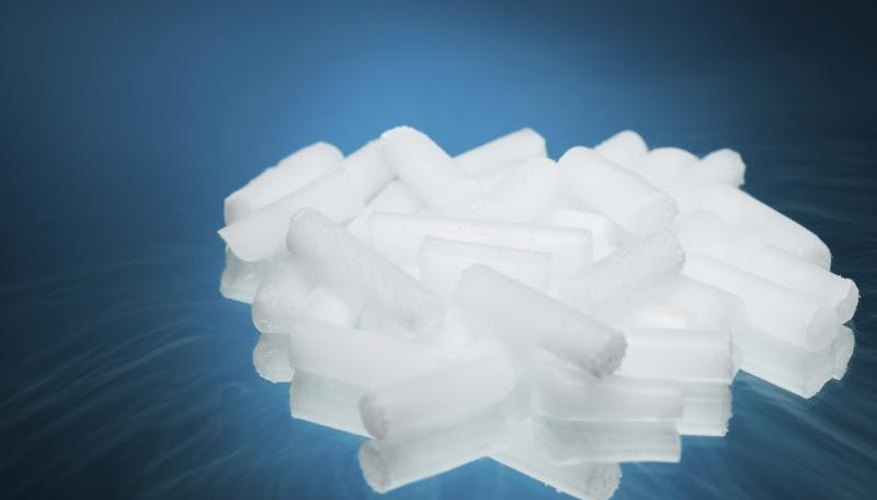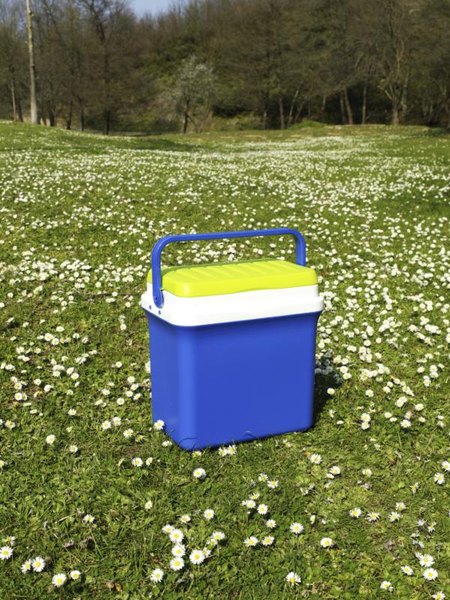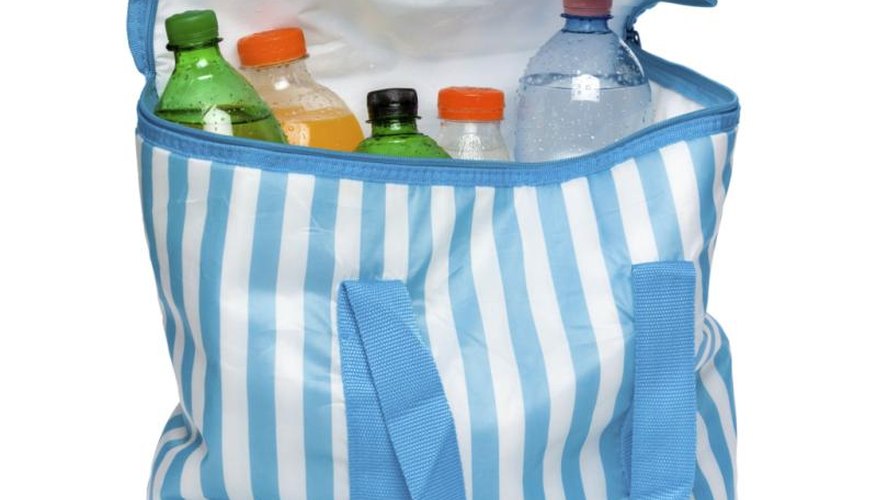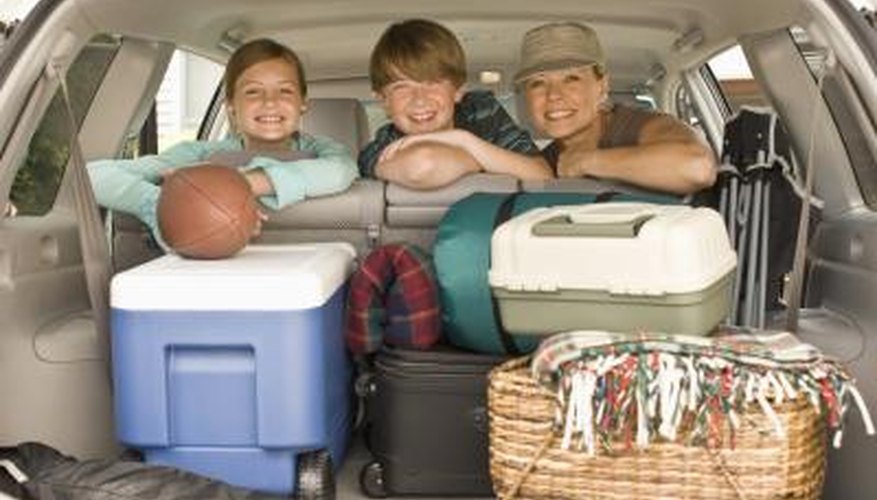
Because dry ice consists of solidified carbon dioxide gas, it doesn't melt and leave your food soggy and sloshing around in your cooler. However, dry ice can burn your skin, crack your cooler and emit harmful vapors, so you'll need to take a few precautions before using it to keep a cooler full of food cold.
When Less Really Is More

nikkytok/iStock/Getty Images
Dry ice is dense -- 50 pounds of dry ice is about the same size as a 25-pound block of regular ice and lasts longer. You can buy dry ice at sporting goods stores, grocery stores and bait shops. A typical 10-inch-by-10-inch-by-2-inch slab weighs 10 pounds. You'll want one 10-pound square for every 15 inches of cooler space. The square will diminish completely over approximately 24 hours. Typically, the dry ice comes prepackaged in heavy plastic or paper bags or wrapped in butcher paper to protect you when you're handling it.
Prepare Your Cooler

taist/iStock/Getty Images
Don't set the dry ice directly on the inside surface of your cooler, because the exceptionally cold temperature -- minus 109 degrees Fahrenheit -- will crack its plastic interior. Always keep the dry ice wrapped in several thicknesses of newspaper, paper bags or towels. If your cooler has a latch, leave it unlatched. Vapors need to escape from beneath the cooler lid, or the expanding carbon dioxide will build up enough pressure to crack or bow the cooler, or blow the lid forcefully off.
Prepare Your Food for Dry Ice

Dorottya_Mathe/iStock/Getty Images
Pre-freeze any foods you don't intend to eat for a day or more. Not doing so will result in your foods freezing unevenly based on their placement near the dry ice. Place the frozen foods on the bottom of the cooler and cover them with several thicknesses of a towel or towels. Towels keep the dry ice from cracking plastic containers or causing freeze burns should it contact frozen meats or vegetables. Place another towel on top of the dry ice and put items you wish to keep cool but not frozen on top of it. Place bottles or aluminum cans of liquids, eggs or other items that crack if they freeze in a soft-sided cooler within the larger cooler, well away from the dry ice to prevent accidental freezing.
Heading Down the Road

Comstock Images/Stockbyte/Getty Images
Put your unlatched cooler in the trunk of your car, which has enough ventilation to allow expanding gases to escape. If you plan to carry your cooler inside the car, take precautions to prevent carbon dioxide from building up in the vehicle. Make sure your car's heating or cooling system is set to fresh air, not recirculation mode. Crack open the window nearest to the cooler at least an inch to allow carbon dioxide to escape. If you feel out of breath or lightheaded while you're transporting dry ice, it is most likely because you don't have adequate fresh airflow into your vehicle.
References
Writer Bio
Indulging her passion for wide open spaces and outdoor fitness through the written word on a full-time basis since 2010, author Jodi Thornton-O'Connell takes the mystery out of outdoor skills and guides readers to discover fun ways to physically connect to natural surroundings.



